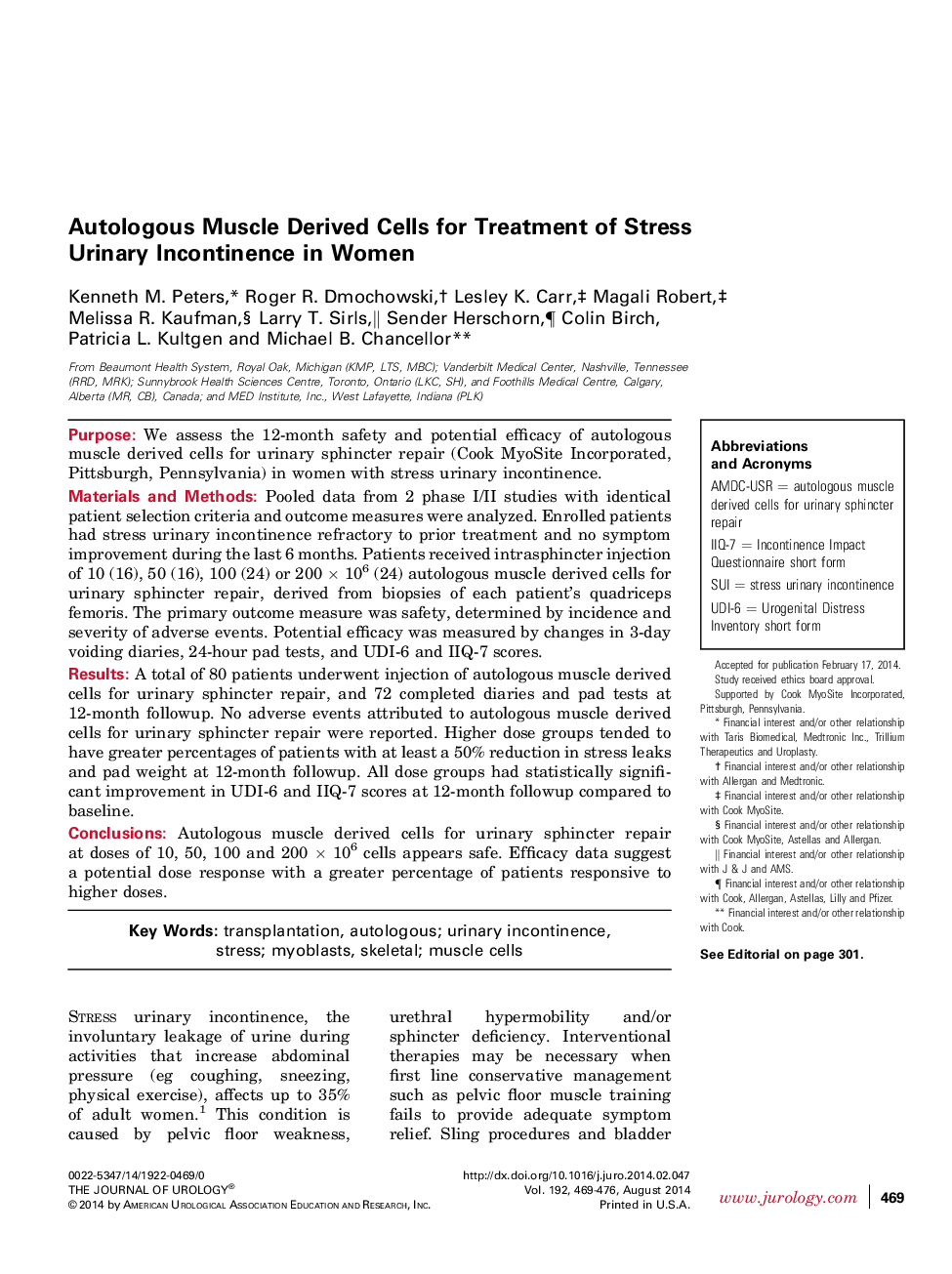| Article ID | Journal | Published Year | Pages | File Type |
|---|---|---|---|---|
| 3861102 | The Journal of Urology | 2014 | 8 Pages |
PurposeWe assess the 12-month safety and potential efficacy of autologous muscle derived cells for urinary sphincter repair (Cook MyoSite Incorporated, Pittsburgh, Pennsylvania) in women with stress urinary incontinence.Materials and MethodsPooled data from 2 phase I/II studies with identical patient selection criteria and outcome measures were analyzed. Enrolled patients had stress urinary incontinence refractory to prior treatment and no symptom improvement during the last 6 months. Patients received intrasphincter injection of 10 (16), 50 (16), 100 (24) or 200 × 106 (24) autologous muscle derived cells for urinary sphincter repair, derived from biopsies of each patient's quadriceps femoris. The primary outcome measure was safety, determined by incidence and severity of adverse events. Potential efficacy was measured by changes in 3-day voiding diaries, 24-hour pad tests, and UDI-6 and IIQ-7 scores.ResultsA total of 80 patients underwent injection of autologous muscle derived cells for urinary sphincter repair, and 72 completed diaries and pad tests at 12-month followup. No adverse events attributed to autologous muscle derived cells for urinary sphincter repair were reported. Higher dose groups tended to have greater percentages of patients with at least a 50% reduction in stress leaks and pad weight at 12-month followup. All dose groups had statistically significant improvement in UDI-6 and IIQ-7 scores at 12-month followup compared to baseline.ConclusionsAutologous muscle derived cells for urinary sphincter repair at doses of 10, 50, 100 and 200 × 106 cells appears safe. Efficacy data suggest a potential dose response with a greater percentage of patients responsive to higher doses.
